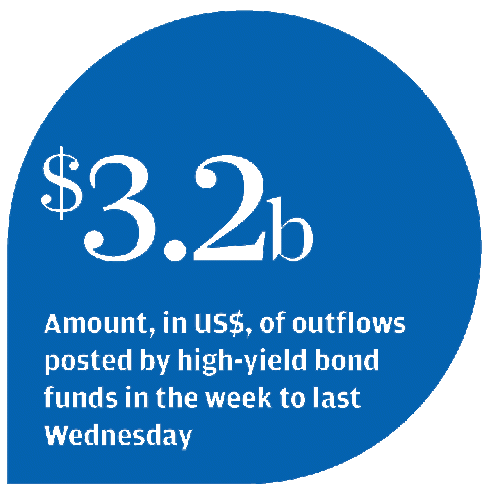
Bond fund weekly outflows are biggest of year
Nervous investors have made largest withdrawals so far this year as fears grow over an early interest rate rise by the US Federal Reserve
Investors worldwide pulled a net US$3.8 billion from bond funds in the week to last Wednesday on rising fears of an early rate rise from the US Federal Reserve, a Bank of America Merrill Lynch report showed.

High-yield bond funds posted US$3.2 billion in outflows, marking their biggest withdrawals in six weeks, while funds that mainly hold US Treasuries posted US$2.9 billion in outflows, their biggest in 13 weeks.
"There was definitely nervousness, because people see the Fed making baby steps toward what will ultimately kill the Treasury market, and that is rate hikes," said William O'Donnell, head US Treasury strategist at RBS Securities.
The Fed renewed its pledge to keep interest rates near zero for a "considerable time" after a two-day policy meeting ended on September 17.
Interest rate projections, however, showed Fed officials expect rate increases to eventually occur at a quicker pace than previously forecast.
Funds that hold floating-rate bank loans, which are protected from rising interest rates, posted US$800 million in outflows, marking their 10th straight week of withdrawals.
"The credit quality of the companies that issue in the loan market is not nearly as good as it used to be," said Gershon Distenfeld, who manages more than US$35 billion in high-yield strategies at AllianceBernstein in New York.
"Defaults have been higher in bank loans for three straight years, and we think that's going to continue."
Funds that hold investment-grade corporate bonds, which sport higher-quality credit ratings than high-yield debt, remained a refuge with inflows of US$3.1 billion, marking their 39th straight week of new cash. Emerging market debt funds attracted US$100 million, marking their fourth straight week of modest inflows.
Stock funds attracted US$5.5 billion in new cash, marking their sixth straight week of inflows and up from meagre inflows of US$41 million the previous week. The money flowed entirely into stock exchange-traded funds (ETF), which attracted US$8.8 billion in new cash.
Stock mutual funds posted US$3.2 billion in outflows.
ETFs are thought to represent the behaviour of institutional investors, while mutual funds are commonly purchased by retail investors.
Funds that mainly hold US stocks attracted US$8.7 billion in new cash, with ETFs attracting all of the new cash, according to the report.
European stock funds posted outflows of US$4.6 billion, marking their biggest withdrawals since August 2011.
Funds that specialise in British stocks accounted for US$1 billion of those withdrawals as concerns rose before a Scottish independence referendum.
Emerging markets equity funds posted US$1.1 billion in outflows, marking their first withdrawals in 15 weeks.
Precious metals funds posted US$400 million in outflows, marking their fourth straight week of withdrawals. Gold prices fell more than 1 per cent to fresh eight-month lows of US$1,221.46 per ounce on Wednesday following the Fed's latest rate projections.

